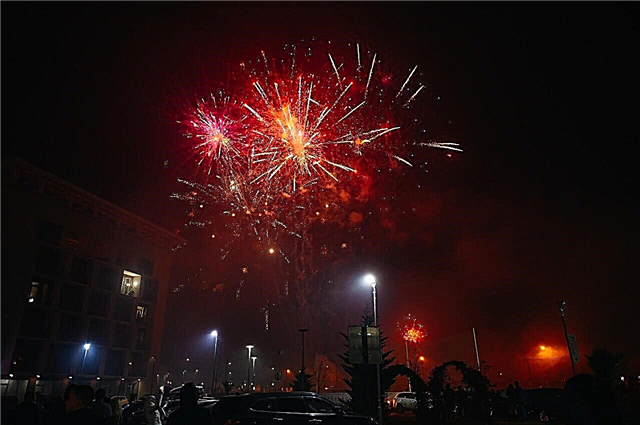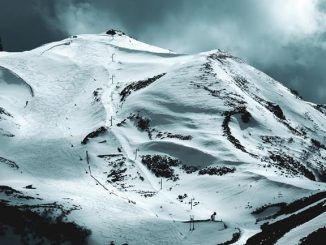Murmansk is the largest city on the planet located beyond the Arctic Circle. Pages of its glorious history are associated with the development of the north, including the Arctic, the Great Patriotic War and navigation. Each of these trends is reflected in the monuments that adorn urban areas. Local authorities, both in the days of the USSR and in modern Russia, focus on the glorification of fellow countrymen or people who contributed to the development of the region.
This is how the war hero Anatoly Bredov and the writer Valentin Pikul were awarded the monument. Most attention is paid to the monument in Murmansk called "Alyosha" - a 40-meter soldier who is on watch at Cape Verde. And the most touching monument is dedicated to the cat Semyon, who returned to the owners, having covered more than 2000 km in 6 years.
Historical and modern monuments of Murmansk
List of the most famous monuments of the city.
"Defenders of the Soviet Arctic during the Great Patriotic War"
The popular name of the monument is "Alyosha". He was placed on the Green Cape in 1974. Architect - Igor Pokrovsky, sculptor - Isaac Brodsky. The height of the monument together with the pedestal is over 40 meters. The figure of the soldier is filled with calmness. He is wearing a raincoat and a helmet, and behind his back is a rifle. The composition is complemented by an eternal flame and a pyramid as a symbol of sorrow. Memorial plates and anti-aircraft guns are located a little to the side.

"To the sailors who died in peacetime"
The complex has been located in the Leninsky district of the city since 2002. The central part is a tower, it is also a lighthouse. The height of the building is 17.5 meters. A wide marble staircase leads to it. On the upper observation deck is the Church of the Savior on the Waters. On the first floor of the tower there is a memorial hall with the names of the dead sailors. An anchor and a fragment of the cabin from the Kursk submarine are installed near the lighthouse.

Stele "Murmansk"
The monument was created according to the sketches of the artist Vyacheslav Gerasimov. The steel needle-stele reaches a height of 20 meters. A sailboat is placed on its top, as if floating in the clouds. The monument rises above a ring of steles of much smaller dimensions. They bear the awards of the Hero City. Not without a large inscription "Murmansk", as well as the geographical coordinates of the area.

"Waiting"
In the 70s of the last century, Viktor Timofeev wrote the poem "Sentimental Watch". The city authorities wanted to create a monument based on the lines of the work, but difficulties with funding did not allow this to be done. They returned to the idea much later and implemented it in 2012. The Smolensk sculptors of the creation depicted in their creation a woman waiting for the return of her sailor from sailing.

"Cat Semyon"
The creation of the monument is based on real history. In 1987, a family from Murmansk lost the Siamese cat Semyon in the capital while returning from vacation. After 6 years, having covered more than 2000 km, he returned home himself. In 2013, he opened a monument to him. The bronze cat looks nothing like the prototype, but it conveys the meaning. He is well-fed, holds a bundle behind his shoulders and looks at the world with kind and a little sad eyes.

Monument to A.F.Bredov
Hero of the USSR lived in Murmansk. From here he went to the front and went through many battles until 1944. Then Anatoly Bredov accomplished a feat - he blew himself up along with his enemies. In 1956, a monument was erected to the valiant soldier. Bredov is captured in the last minutes of his life, holding an anti-tank grenade over his head. His figure literally grows out of stone, once again emphasizing the inflexibility of the hero's character.

Monument to V.I.Lenin
Located on the avenue named after the leader of the world proletariat since 1957. The monument was made of bronze, and the pedestal was made of granite. The total height is about 17 meters. When creating the monument, many claims were made against the sculptor Nikolai Tomsky. He worked in a tight framework and completed the order on time. During the Soviet era, meetings and demonstrations were held at the monument.

Cod Monument
One of the most unusual monuments in the city was opened in 2015. This commercial fish is very important for Murmansk and helped its economy during difficult times. About two dozen sketches were made for the monument before choosing the final project. The cod was made close to real in appearance and dimensions. Murmansk craftsmen made a monument 1.2 meters long and weighing 32 kg.

"To the soldiers of the 6th Heroic Komsomol Battery"
The opening of the memorial took place in 1959. It represents an impressive pedestal with a commemorative plaque and an artillery battery mounted on it. Dedicated to the bloody battles of 1941 and their heroes. The Eternal Flame burned here for some time, but it was removed. In 1991, the remains of soldiers who died during the Great Patriotic War were reburied at the monument.

"To fishermen and ships of the trawl fleet, who died during the war"
The popular name is "The Singing Stele". The author of the project is artist Rem Balzhak, who also went through the war. The pillar in the center of the memorial symbolizes a pillar of sea water that explodes into the sky. At its top is a flag with a red star, a sickle and a hammer. Around there is a public garden, where along the footpaths there are information stands and the smallest monument in Murmansk dedicated to the sea wolf.

Monument to the icebreaker "Ermak"
An unusual composition is located at one of the walls of the local history museum. Date of creation - 1965. The icebreaker "Ermak" served in the fleet for 64 years and was decommissioned in 1963. This ship is an important part of the history of exploring and conquering the Arctic. The monument is a mosaic panel three stories high and rests on a pedestal made of stones. At the top there is an anchor from that very "Ermak".

Memorial to the soldiers of the 1st Air Defense Corps
During the war, the soldiers of the 1st Air Defense Corps showed themselves well. After the victory, it was on the basis of this unit that the air defense forces of the Arctic Circle were created. In memory of the military feat, a memorial was created, which included several monuments - in the past, operating models of military equipment. Here on the pedestals are aircraft and anti-aircraft guns designed to keep the country's sky intact.

Monument to Nicholas the Wonderworker
The author of the project is the traveler and researcher Fyodor Konyukhov. The idea was financed by residents of Murmansk, who organized a fundraiser. We managed to realize our plans in 2018. People involved in the creation of the monument hope to install similar sculptures in three more cities: Nakhodka, Sevastopol, Kaliningrad. So they will receive a cross on the map, which should be a blessing for the country.

"To the Conquerors of the Arctic"
The composition is located near the local history museum. The history of Murmansk is closely related to the study of the north, including the Arctic. The basis of the composition is a wall, divided into three parts. The central one has a bas-relief depicting an explorer, captain and pilot. In the foreground of the memorial is a hemisphere with a map and sea routes laid along it. The monument is illuminated in a special way with 53 lamps.

Monument to the Victims of the Intervention
Founded in 1927 for the 10th anniversary of the revolution. The monument was created by Murmanskzhilstroy. The design was supposed not only to remind of the events of 1918-1920, but also to serve practical purposes - to be a platform for performances. It was planned to erect a monument to Lenin nearby, but the project was never implemented. There are also buried 24 prisoners of the concentration camp called Yokangskaya prison.

Monument to the border guards of the Arctic
Opened in the park in front of the Drama Theater in 2013. The ceremony was timed to coincide with two holidays - the 75th anniversary of the Murmansk region and the 95th birthday of the border service in its current form. The sculptural composition consists of four figures - border guards and a watchdog.Behind their backs is a pillar-line that must be protected at any cost. The author of the monument is Ivan Melnikov.

Monument to Valentin Pikul
The sculpture was cast in Smolensk. It was made of bronze according to the design of Alexander Arsentiev and weighed about 700 kg. The installation took place in 2013 in a park on Captain Burkov Street, not far from the place where a hospital for sailors was located during the war. Valentin Pikul served in Murmansk and many of his works are either dedicated to the city or are based on the author's impressions of it.

Monument in honor of the military community of the countries of the anti-Hitler coalition during the Second World War
Installed in 1975 in the park near the House of Culture of Seamen. Local architects from Murmanskgrazhdanproekt were responsible for the project. The monument was made in the form of a roughly drawn hand holding a globe. Material - dark red granite. Nearby, on a slab of black stone, a dedication to the heroic deeds is carved. The opening ceremony was attended by representatives of the countries of the anti-Hitler coalition.

Steam locomotive-monument L-4386
In the past, it was an operating steam locomotive, plying on different branches, but most often between Petrozavodsk and Kandalaksha. It was assembled at the Voroshilovgrad plant in 1951 and was nicknamed "Lebedyanka" by the name of the designer. In 2004, the locomotive was decommissioned, and until 2016 it remained mothballed in the depot. After cleaning from rust and painting, the rarity turned into a monument and found a place of eternal parking at the Murmansk railway station.

Monument to S. M. Kirov
It has been standing by the building of the Regional Duma since 1940. The sculpture was cast in Moscow according to the project of Zinovy Vilensky. The monument became the first of its kind in the type of production for Murmansk. The pedestal is about 5 meters high. In 1958, it was faced with granite, and in the 80s, the surrounding area was restored to its proper form. Since cracks appeared on the structure, restoration was carried out in 2009.

"Broken Heart"
It has been located at the intersection of Kolsky and Kirov avenues since 2001. The memorial is dedicated to the residents of the city who died in local clashes and wars. The main part of the monument is made of dark red granite. She symbolizes the heart. And in the opening a tree is depicted, as if tearing apart the structure from the inside. Moreover, on one side of it there are leaves, that is, life, and on the other, no, which means death.

"In honor of the sister cities of Murmansk"
The popular name of the monument is "Cheburashka". The monument was created in 1979. In the center there is a key - a symbol of the city, and rings - a union. On opposite sides of the pillar are written the names of the sister cities that have concluded a treaty of friendship with Murmansk. Now on the list: Akureyri (Iceland), Alania (Turkey), Groningen (Netherlands), Jacksonville (USA), Luleå (Sweden), Minsk (Belarus), Tromso and Vadsø (Norway), Szczecin (Poland).

Monument to Cyril and Methodius
It has been located on the square of the First Teachers since 1990. The monument is an exact copy of the sculptural composition installed in Sofia in front of the National Library. It was in Murmansk that they began to celebrate the day in Slavic writing. Therefore, the Bulgarian side presented a monument to the city. The statues of Cyril and Methodius are cast in bronze. They are holding a pen, holy scripture and a scroll with the first letters of the Slavic alphabet.

"In honor of the builders who died in 1941-1945"
The monument was erected in 1974 in the Oktyabrsky district. Here at the beginning of the war, detachments of volunteers were formed. The authors of the project are sculptor Gennady Glukhikh and architect Felix Taxis. They made the monument similar in construction to a permanent fiery point. These are the very ones that were erected by builders during the Great Patriotic War, sometimes directly under enemy fire.

Alley of writers
Created at the regional children's and youth library in 2006. Monuments to writers were erected in different years. The first was a bust of Nikolai Rubtsov. It was made of durable cement, and the pedestal was made of granite at the Monchegorsk stone-cutting plant. Valentin Pikul, Vitaly Maslov, Vladimir Smirnov and Alexander Podstanitsky are also marked on the alley. All five busts are made in the same style by Alexander Arsentiev.

Monument to Zoya Kosmodemyanskaya
The opening took place in 2018 in the recently renovated public garden of the Pervomaisky District. The weight of the bronze sculpture exceeds 100 kg. It was installed in the foreground of a low stele. A dummy of the order is attached nearby. The author of the project is the artist Alexander Arsentiev. The base was assembled from two blocks made of granite. Marble was also used to give the composition more subtle features.

Knowledge Cube
The art object in its current form was dreamed of by its creator Konstantin Novikov. He brought the project to life in 2014. The author's idea is to constantly move towards excellence. For this reason, the cube is not completely assembled from individual parts. There are multicolored spotlights inside the monument. Illuminated paths lead to it, and there are benches around. Several playgrounds have been created nearby.

"To the soldiers of law and order who died in the line of duty"
The memorial is made in the form of a multi-layer wall with ledges. In the center there is a low pillar with the coat of arms of the department, and next to it there is a commemorative inscription. In a wide foundation-pedestal, an abandoned area for the Eternal Flame. Every year, on the Day of the employee of the internal affairs bodies, a flower-laying ceremony is held near the monument. On this and some other holidays, an honor guard is on duty in front of the memorial.

Monument to I.D.Papanin
The polar explorer was honored with a bust in 2003. The place of installation was chosen a square at the intersection of the street named after Ivan Panin and the street named after Marx. The monument was made of metal several decades ago in St. Petersburg. The pedestal was made of a rather rare stone - khibinite. The choice of materials is due to the harshness of the local climate and will help the bust to exist for a long time without restoration.

Aircraft Yak-38
In 2001, the monument was erected near school No. 57. At the same time, the educational institution was named after the Hero of Russia Timur Apakidze. He was one of the best naval pilots in history. The aircraft is designed to remind not only of the feat of the Major General, but also of other pilots of naval aviation. The Yak-38 is placed on an impressively curved pedestal to create the illusion of floating in the air.












